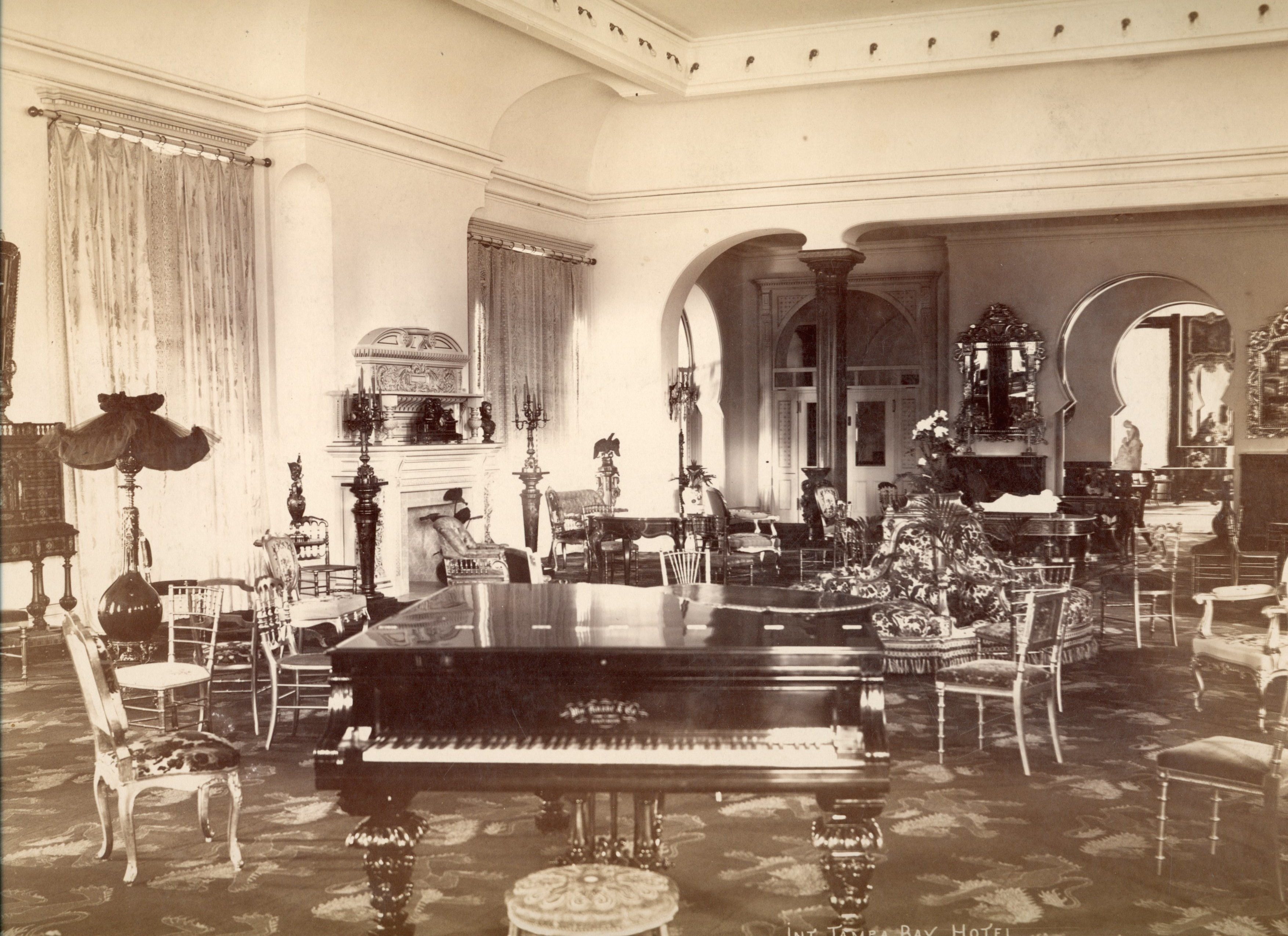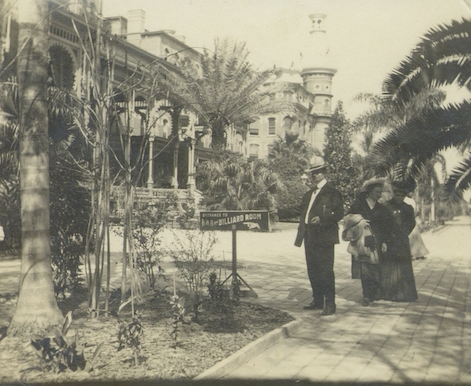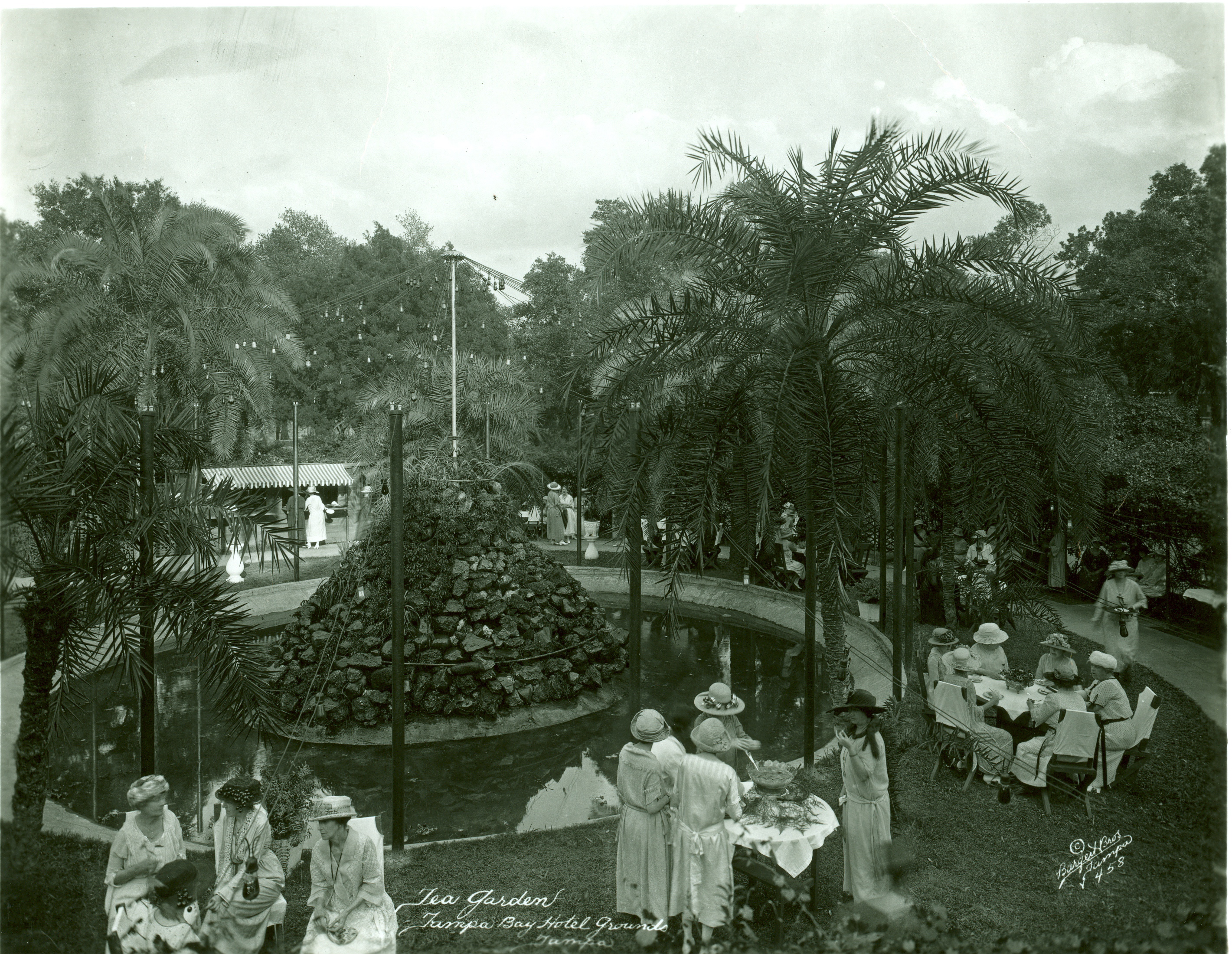Constructed between 1888 and 1891, the Tampa Bay Hotel served as the capital of Henry Bradley Plant's empire of railroads, steamships and hotels. Plant relied on his personal wealth, not investors, to build the opulent seasonal resort, spending $2,500,000 and an additional $500,000 for furnishings. Designed by architect J A Wood, the exotic Moorish Revival structure covered six acres and was 1/4 mile long. The Tampa Bay Hotel's 511 rooms were among the first in Florida to be completely electric. Advertised as completely fireproof, the building contained poured concrete reinforced with rails and cables in between floors. The Hotel housed a billiard room, barbershop, shoeshine service, beauty shop, flower shop, telegraph office, formal dining room, Grand Salon, Music Room and telephones in all guest rooms.

The first floor of the Tampa Bay Hotel offered suites of three to seven rooms that provided a degree of luxury never seen in Tampa. Most of the rooms had private baths and all had electricity and telephones. Guests and luggage traveled between the five floors in two of Florida’s first passenger and freight elevators. Guests reveled in this atmosphere of heady opulence, surrounded by exotic furnishings, porcelains, Venetian mirrors and sculptures handpicked in Europe by Henry and Margaret Plant. The décor was a collection demonstrating such exquisite taste that one writer described it as a jewel casket into which has been gathered an infinite number of gems.
Open from December to April, the Tampa Bay Hotel offered a fashionable retreat to Gilded Age elites during the winter social season. The dining room served a formal eight-course meal of fine wine and haute cuisine prepared by chefs who gained fame in European courts and at high-profile events, including the reception following President Grover Cleveland’s inauguration. The Music Room hosted daily orchestra concerts. The Grand Salon, or parlor, was stuffed with ornate furniture, European statues and Venetian-style mirrors. In 1892, The New York Times writer William Drysdale commented,gentlemen of the pen who can write a column or two about a snow-capped mountain peak and go into ten-page ecstasies over a sunrise should stand in the middle of the Tampa Bay Hotel parlor and let their immaculate English flow unrestrained.


The Grounds
The grounds of the Tampa Bay Hotel were just as awe-inspiring as the building itself, spanning 150 acres. Guests could stroll along the serpentine walks that wove through an exotic landscape of tropical flora and garden statuary. The Flower House, filled with rare plants from all parts of the world, was one of three charming conservatories on the grounds.
The Hotel offered an array of outdoor diversions, including wild game hunting, fresh and saltwater fishing, sailing, rowing, and canoeing. Bicycles and carriages were at their disposal. Porters carried guests in rickshaws to tour the property. The amenities included an 18-hole golf course, tennis courts, a croquet greensward, boathouse, hunting and fishing grounds, stables, racetrack and kennels. The Exposition Hall advertised Florida products, reflecting Henry Plant's commitment to the state's economic growth. In 1896, Plant added the Tampa Bay Casino. The entertainment venue held a 2,000-seat opera house, a heated swimming pool, a bowling alley, spa facilities and card rooms. The Casino billed the decade's most celebrated performing artists, including Minnie Maddern Fiske, Billy Kersands and William Gillete. In all, twenty-one buildings fashioned the grounds of the Tampa Bay Hotel into a winter playground.